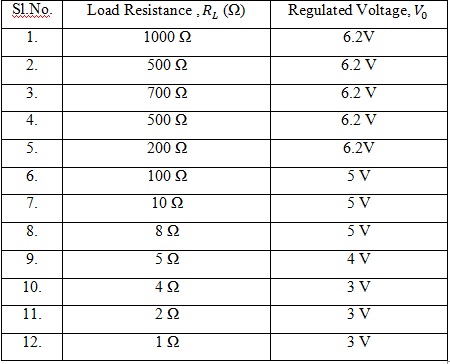





Published on Apr 02, 2024
The power sources which we use may not be able to provide us constant voltage. This may affect the proper functioning of the eletronic device. Zenerdiode is a special type of diode having a sharp cut off voltage during reverse biasing. At cut off voltage it conducts to large values of current, but voltage remains at constant values. Even the input voltage varies or the external load varies, the output voltage remains at a steady value. Such Zenerdiode voltage regulators are used mainly in voltage stabilizers, T.V's etc.
In general, electronic circuits uses tubes or transistors for a source of d.c. power. In pracitce, d.c power for electronic circuits is most conveniently obtained from commericial a.c lines by using rectifier filter system called a d.c power supply.
An ordinary or unregulated d.c power supply contains a rectifier and a filter circuit. The output from rectifier is a pulsating d.c. These pulsations are due to the presence of a.c. component in the rectifier output. The filter circuit removes the a.c. component so that steady d.c voltage is obtained across the load
A rheostat is an electrical component that has an adjustable resistance. It is a type of potentiometer that has two terminals instead of three. The two main types of rheostat are the rotary and slider. The symbol for a rheostat is a resistor symbol with an arrow diagonally across it. Rheostats are used in many different applications from light dimmers to the motor controllers in large industrial machines.
Most rheostats are the wire wound type that have a long length of conductive wire coiled into a tight spiral. The linear type has a straight coil, while the rotary type has the coil curved into a torus to save space. The coild and contacts are sealed inside the case to protect them from dirt, which can cause on open circuit and from moisture, which can cause a short circuit. Rheostats can be made from other materials such as carbon disks, metal ribbons and even certain fluids. As long as a material has a significant resistance change over a short length, it can probably be used to make a rheostat.
The basic principle that rheostats used is Ohm's law which states that current is inversely proportional to resistance for a given voltage. This means that the current decreases as the resistance increases or it increases as the resistance decreases. Current enters the rheostat through one of its terminals, flows through the wire coil and contact, and exits through the other terminal. Rheostat do not have polarity and operate the same when the terminals reversed. Three terminal potentiometers can be use as rheostats by connecting the unused third terminal to the contact terminal. Principle
When the reverse bias on a crystal diode is increased, a critical voltage, called breakdown voltage is reached where the reverse current increases sharply to a high value. The satisfactory explanation of this breakdown of the junction was first given by the American scientist C. Zener. Therefore the breakdown voltage is sometimes called, Zener voltage and the sudden increase in current is known as Zener current.
The breakdown of Zener voltage depends upon the amount of doping. If the diode is heavily doped, depletion layer will be thin and consequently the breakdown of the junction will occur at a lower reverse voltage. On the other hand, a lightly doped diode has a higher breakdown voltage. When an ordinary crystal diode is properly doped so that it has a sharp break down voltage, it is called Zener diode
• 6.2 V, 400 mW Zener diode.
• Unregulated Power supply of about 16 V
• Resistors
• 10 K? resistance box
• Rheostat
• Multimeter
• Circuit board etc.
• A Zene diode is like an ordinary diode except that it is properly doped so as to have a sharp breakdown voltage.
• A Zener diode is always reverse connected, ie, it is always reverse biased.
• A Zener diode has sharp break down voltage, called Zener voltage .
• When forward biased, its characteristics are just those of ordinary diode.
• The Zener diode is not immediately burnt first because it has entered the breakdown region. As long as the external circuit connected to the diode limits the diode current to less than burn out value, the diode will not burn out

i) A voltage regulator using Zener diode is constructed and its load and line variation is studied .
ii) Zener Voltage is = 6.2 V